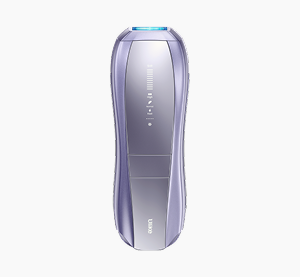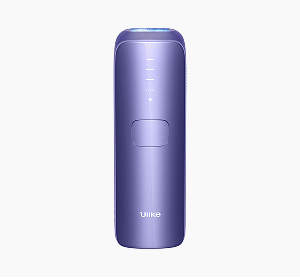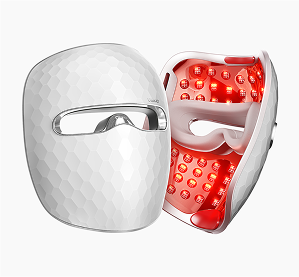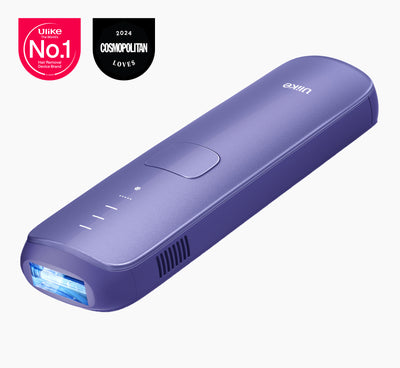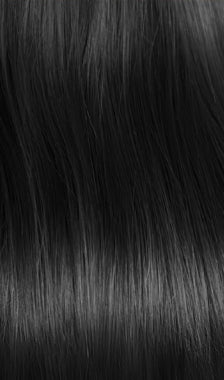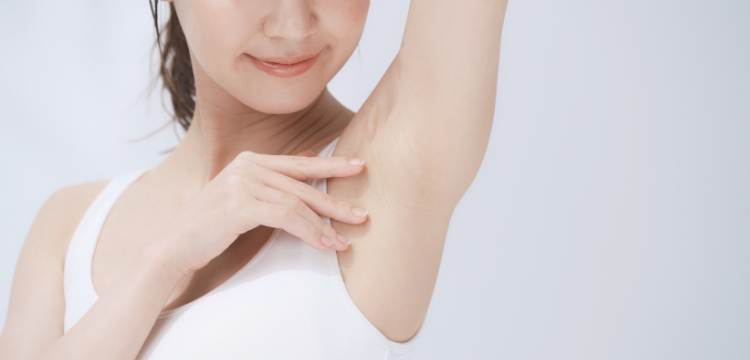
Frequently Asked Questions Regarding Laser Hair Removal
Laser hair removal has become an increasingly popular choice for individuals seeking a long-term solution to get rid of unwanted hair. As a dermatologist with experience in laser procedures, it is imperative to provide individuals with comprehensive guidance regarding the experience of laser hair removal. Grasping the fundamental principles of laser hair removal, and effectively managing post-treatment expectations are pivotal elements in securing a favourable and successful outcome. There are a plethora of questions that every dermatologist comes across related to laser hair removal, they cannot all be covered in one article. We might cover them in the future, but this article is just about the most frequently asked questions to dermatologists regarding laser hair removal.
- Can You Wax Before Laser Hair Removal?
- Can I Wax After Laser Hair Removal? (& Why)
- Preparing for Perfection: The Do's and Don'ts of Prepping for Laser Hair Removal
This article explores the implications of waxing before undergoing laser hair removal, emphasizing the importance of hair removal methods in achieving effective results.
Learn about the recommendations for waxing after laser hair removal, including potential effects on your skin and hair regrowth.
Understanding the timing and method of hair removal is crucial as it can significantly influence the effectiveness of your laser treatment and your overall results.
Choosing the right hair removal method can enhance the overall effectiveness of laser treatments.
This guide outlines essential steps for preparing for laser hair removal, including what to avoid to ensure optimal treatment outcomes.
Proper preparation is key to achieving the best results from your laser hair removal experience.
Following these guidelines can help minimize risks and enhance the effectiveness of your laser hair removal sessions, leading to improved outcomes.
Table of Contents:
- Part 1: How does laser hair removal work?
- Part 2: Which type of hair responds best to laser hair removal?
- Part 3: Is there any pre-treatment protocol?
- Part 4: What happens during laser hair removal?
- Part 5: Is there any downtime?
- Part 6: What to do after getting the laser hair removal done?
- Part 7: When to expect the results after getting the procedure done?
- Part 8: How many sessions of laser hair removal are required?
- Part 9: How long do the results of hair removal last?
- Part 10: What are the side effects of laser hair removal?
Discover the science behind laser hair removal, including how the laser targets hair follicles for effective hair reduction.
By grasping the underlying principles, you can better appreciate how the procedure leads to long-term hair reduction and what to expect during treatment.
Understanding these principles can enhance your confidence and expectations regarding the effectiveness of the treatment.
Find out which hair types are most responsive to laser treatments, helping you understand if you are a suitable candidate.
Knowing your hair type can significantly impact the success of the treatment, ensuring you receive personalized advice based on your characteristics.
Hair types such as dark, coarse hair tend to respond better to laser treatments compared to lighter hair, making it important to assess your individual characteristics.
Understand the pre-treatment protocols that can enhance the effectiveness of your laser hair removal session.
Prior to your session, it is essential to follow recommended guidelines, as they may maximize effectiveness and ensure a smoother experience.
Pre-treatment protocols may include avoiding sun exposure and certain medications, which can significantly improve treatment outcomes.
This section describes the process of laser hair removal, detailing what clients can expect during their appointment.
Clients can expect a brief explanation of the laser technology used, as well as how the procedure will be performed for their comfort and safety.
Learn about potential downtime and recovery time after laser hair removal, including tips for post-treatment care.
Post-treatment care is crucial for optimal results, and being informed about recovery expectations can aid in a smoother healing process.
Downtime varies by individual, but understanding the recovery process can help you plan your schedule effectively.
Explore essential aftercare steps to optimize results and maintain skin health following laser hair removal.
Following the aftercare steps can significantly enhance the longevity of your results and keep your skin in optimal condition.
Following these steps is crucial for maintaining the skin's health and ensuring the effectiveness of the laser treatment.
Results may vary from person to person, but typically, you can expect to see some improvement within a few weeks.
While some may notice changes in as little as a few weeks, others may take longer; patience and adherence to the treatment plan are key to success.
It's important to note that individual factors, such as hair type and skin tone, can also influence the effectiveness of the treatment.
Understanding how these factors can impact your results can help you set realistic expectations and tailor your approach accordingly.
Generally, most individuals require multiple sessions to achieve optimal results, often ranging from 4 to 8 treatments.
Multiple sessions are essential because they allow for the gradual targeting of hair in different stages of growth, which optimizes overall hair reduction.
The exact number of sessions required for optimal results can depend on factors like hair thickness and growth cycle.
Factors such as skin type and the area being treated can also influence the number of sessions required.
The results can last for an extended period, but maintenance sessions may be needed to prolong the effects.
Some individuals may find that regular maintenance helps sustain their results over time.
While many enjoy long-lasting results, \1 can vary based on hair growth patterns.
Common side effects include temporary redness and swelling, which may occur as a natural response to the treatment.
These reactions are typically short-lived and resolve quickly, allowing most people to return to their normal activities soon after treatment.
While these side effects are generally mild and temporary, it's advisable to consult with a professional if you have concerns.
How does laser hair removal work?
 Laser hair removal operates on the principle of selective photothermolysis, a mechanism directed at melanin-rich structures within the hair follicles. Through the emission of a focused light beam, the laser is absorbed by the melanin present in the hair shaft and follicle, facilitating the transformation of light energy into thermal energy. This process results in follicular damage, thereby impeding subsequent hair growth.
Laser hair removal operates on the principle of selective photothermolysis, a mechanism directed at melanin-rich structures within the hair follicles. Through the emission of a focused light beam, the laser is absorbed by the melanin present in the hair shaft and follicle, facilitating the transformation of light energy into thermal energy. This process results in follicular damage, thereby impeding subsequent hair growth.
Which type of hair responds best to laser hair removal?
It is important to note that laser hair removal is most effective on individuals with darker hair and lighter skin, as the contrast between hair and skin tones enhances the absorption of laser energy. Because the laser targets pigment and melanin, and the darker the hair, the richer it is in melanin, and therefore, more responsive to laser treatments. Modern laser technologies, such as diode, Nd: YAG, and alexandrite lasers, offer increased precision and safety during the procedure.
Is there any pre-treatment protocol?
Prior to the actual treatment, the targeted area is cleaned, and some patients may be given a topical anesthetic gel. This is useful when treating small and delicate parts of the body. The gel usually requires 30-60 minutes to work.
What happens during laser hair removal?
 Laser hair removal takes place in a room specially dedicated to carrying out this procedure, and all the people in the room are required to wear protective eyewear. For both the patient and the doctor, it is essential to protect your eyes from damage.
Laser hair removal takes place in a room specially dedicated to carrying out this procedure, and all the people in the room are required to wear protective eyewear. For both the patient and the doctor, it is essential to protect your eyes from damage.
In this procedure, the skin to be treated is stretched, and the high-powered laser is aimed at the skin. The patients are usually able to tolerate the laser pulses, and describe the feeling as warm, a pins and needles type of sensation, or even similar to the feeling of a rubber band being snapped against the skin.
The laser operates through the mechanism of destroying the hair through vaporization; this results in small puffs of smoke that resemble the smell of sulfur.
This process is designed to target hair follicles while minimizing damage to surrounding skin, enhancing \1.
The period of treatment varies depending on the size of the area that needs to be treated. It may take five minutes to treat the upper lip, while the back or the legs may take over an hour.
Knowing the approximate \1 for various body parts can assist you in scheduling your appointments effectively.
Understanding the treatment duration for different areas can help you plan your sessions more effectively.
Is there any downtime?
No, there is no real downtime after getting laser hair removal done. You might experience mild erythema (redness) and there might be some degree of localized edema (swelling) but you can resume your daily activities as soon as you get the procedure done.
What to do after getting the laser hair removal done?
After you have finished your laser hair removal, you must immediately protect your skin from sunlight, as after the procedure, the sensitivity of your skin is enhanced. Therefore, follow these instructions for optimal results:
It is essential to keep your skin protected, as \1 can lead to discomfort if exposed to harsh elements.
Taking care of your skin post-treatment is crucial for enhancing recovery and maintaining results.
- Avoid direct sunlight hitting your treated skin, as it might worsen the redness and may cause sunburn.
- It is advisable to not use any tanning bed or any other tanning equipment after getting the procedure done.
- It is imperative to follow your dermatologist’s after-care instructions, as every person is different and instructions may vary depending upon the skin type.
To protect your skin, consider wearing protective clothing or using \1 if you need to be outdoors.
Adhering to your dermatologist’s recommendations can significantly enhance your recovery process and skin health.
Following your dermatologist's advice can help \1 to your specific skin needs, improving overall outcomes.
After-care instructions are crucial for ensuring the best results and minimizing side effects following laser hair removal. These may include avoiding sun exposure and using gentle skincare products.
When to expect the results after getting the procedure done?
 The results vary from one person to another. Mostly, you will see the results immediately after the procedure but this may vary depending on the type of laser that has been chosen for you, the color of your skin, and the area that has been treated. According to the American Academy of Dermatology, there is a 10-25% reduction in hair after initial treatment. However, I have seen more variation in my clinical practice, as some individuals experience a greater reduction in hair. Another interesting thing that patients experience after getting the procedure done is that their hair gets finer and lighter in color. This can be attributed to the property of lasers to target melanin.
The results vary from one person to another. Mostly, you will see the results immediately after the procedure but this may vary depending on the type of laser that has been chosen for you, the color of your skin, and the area that has been treated. According to the American Academy of Dermatology, there is a 10-25% reduction in hair after initial treatment. However, I have seen more variation in my clinical practice, as some individuals experience a greater reduction in hair. Another interesting thing that patients experience after getting the procedure done is that their hair gets finer and lighter in color. This can be attributed to the property of lasers to target melanin.
How many sessions of laser hair removal are required?
It varies from patient to patient. A minimum of 4 sessions are required, each one month apart, to see the desired results. In my clinical practice, I have seen good results within four to six sessions but in certain individuals with underlying medical conditions, such as polycystic ovarian disease (PCOD), more sessions are required. Some patients might need follow-up maintenance sessions for “touch-ups” for optimal results. It is imperative to ask your dermatologist, as every doctor first treats the underlying cause before addressing further concerns.
Some people also notice growth between sessions, and this can be attributed to a variety of causes. Therefore, always seek guidance from an experienced dermatologist for optimal results.
Consulting a dermatologist is essential for understanding the reasons behind any hair growth and receiving tailored advice to improve your treatment results.
Understanding the reasons for \1 can help set realistic expectations for your treatment journey.
It's important to note that factors such as \1 and individual hair growth cycles can influence hair regrowth between treatments.
Growth between sessions can be normal, and understanding the reasons behind it is important for managing expectations. Regular consultations with your dermatologist can help address any concerns you may have.
Additionally, \1 with a professional can provide insights into the effectiveness of your treatment plan and any necessary adjustments.
Typically, multiple sessions are necessary to achieve desired results, as hair grows in cycles. The exact number may vary based on individual factors such as hair type, skin tone, and the treatment area.
On average, most individuals may require \1 for optimal results, but this can differ widely based on personal circumstances.
How long do the results of hair removal last?
The results of hair removal may last for months or even years. Mainatenance sessions might be required in between, but this may vary. Initially, it is extremely important to consistently get four to six sessions of hair removal done once a month in order to notice the desired results. As previously mentioned, it may vary if you have any underlying medical conditions. Therefore, seeking professional help from a specialist doctor is mandatory.
What are the side effects of laser hair removal?
 Laser hair removal can have possible side effects. They can be divided into minor and major. Immediate side effects are minor, and they hardly last for a day or two. These include erythema (redness), edema (swelling), and a bit of irritation or discomfort.
Laser hair removal can have possible side effects. They can be divided into minor and major. Immediate side effects are minor, and they hardly last for a day or two. These include erythema (redness), edema (swelling), and a bit of irritation or discomfort.
Other side effects are major, which are rare if you choose the right doctor. Therefore, it is always advisable to get your procedure from a certified dermatologist. Major side effects include blister formation, infection of the skin overlying the treated area, development or reactivation of cold sores, hypo- or hyperpigmentation and even scarring in some cases.
Today, there are many aesthetic clinics that offer laser hair removal, but the procedures are not being carried out or supervised by a dermatologist. As a result, many patients are developing side effects because they are being treated by inexperienced individuals. If you choose a certified dermatologist and follow his/her instructions, there are very few chances of developing side effects. Therefore, opting for the right doctor is the key to smooth skin free of unwanted hair.

5 Dermatologist Recommended At-Home Laser Hair Removal Devices 2025

Hair on Female Breast: Causes, How to Remove, And More

PCOS: What is it, Symptoms, and Management
Free Virtual 1-on-1 Consultation


